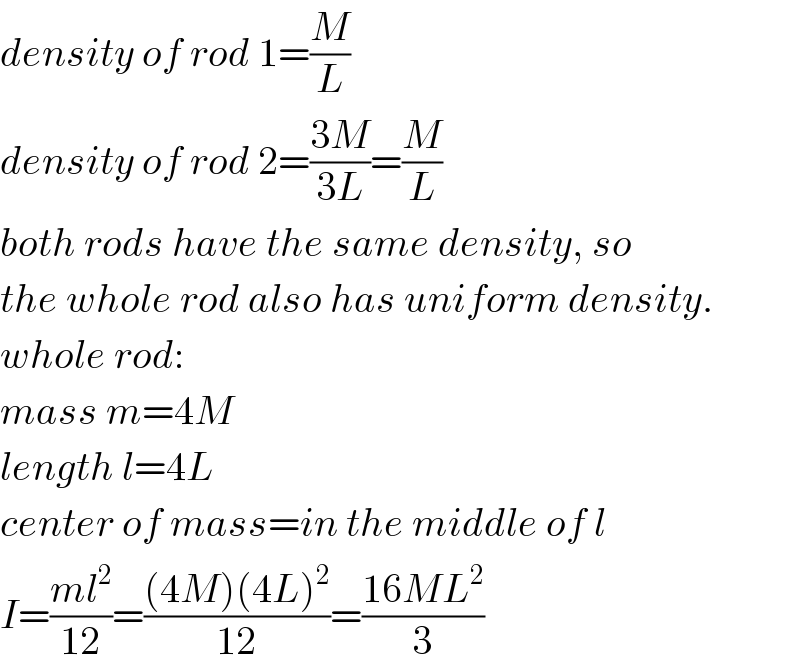
Question and Answers Forum
Question Number 57124 by necx1 last updated on 30/Mar/19

Commented by necx1 last updated on 30/Mar/19

Commented by mr W last updated on 31/Mar/19

Commented by necx1 last updated on 31/Mar/19

Answered by tanmay.chaudhury50@gmail.com last updated on 31/Mar/19
![1)[origin (0,0,0) is taken at free end of rod L] 2)co ordinate of joined end of two rod(L,0,0) 3)co ordinate of free end of rod 3L(4L,0,0) 4)co ordinate of centre of mass of rod of lengthL ((L/2),0,0) 5)co ordinate of C.M of rod of length 3L {(L+((3L)/(2 ))),0,0}=(((5L)/2),0,0) co ordinate of centre of mass combined rod is x=((m×(L/2)+3m×((5L)/2))/(m+3m))=((8mL)/(4m))=2L c.m(2L,0,0) Moment of inertia =M×(L^2 /(12))+M(2L−(L/2))^2 +3M×(((3L)^2 )/(12))+3M(2L−((5L)/2))^2 =((ML^2 )/(12))+((M×9L^2 )/4)+((3M×9L^2 )/(12))+((3M×L^2 )/4) =((28ML^2 )/(12))+((12ML^2 )/4) =((28ML^2 +36ML^2 )/(12))=((64ML^2 )/(12))=((16ML^2 )/3) pls check is it correct](Q57158.png)
Commented by necx1 last updated on 31/Mar/19

Commented by tanmay.chaudhury50@gmail.com last updated on 31/Mar/19

